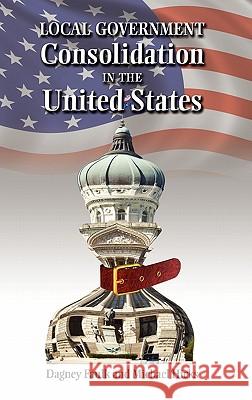Local Government Consolidation in the United States » książka
Local Government Consolidation in the United States
ISBN-13: 9781604977486 / Angielski / Twarda / 2011 / 304 str.
This book addresses two issues related to the structure of local government: the determinants of consolidation and the potential impact of consolidation on local government spending. This is a narrow undertaking and leaves important elements of local government reform for future analysis. The study's primary foci are examining the factors that influence city-county consolidation, considering the impact of city-county consolidation on local government spending, and estimating the potential savings that could result from the scale economies and efficiency gains from consolidating local government units. While other regions of the United States are considered in this study, but the analysis focuses primarily on the Midwest where population declines and changes in the employment base and state policies (such as property tax caps in Indiana) have had dramatic effects on the fiscal viability of local governments. The current economic climate, along with policy changes related to property tax restructuring in many states, has led to substantial reductions in local governments' budgets. As a result, many local governments are in crisis and are considering some level of consolidation. Statistical methods and data on consolidation referendum attempts in the United States since 1970 are used to test whether governments that have consolidated (i.e., voters approved the consolidation referendum) had higher spending prior to their consolidation (as measured by local government employment rates, payrolls, and expenditures) compared to the average local government in the state. The effects of city-county consolidation are explored; using consolidation referendum data, the impact of consolidation on local government employment rates, payrolls, and expenditures is examined. The influence of consolidation on economic development is also investigated with some interesting results. The study also used two methods to estimate the savings from government consolidation and presents aggregate models to examine the potential savings from economies of scale and efficiency improvements. The book also helpfully provides a helpful discussion of the economies of scale and efficiency for several functional areas, including police and fire protection, sewerage, solid waste, public welfare, administration, health, education, and libraries. This book will be an essential resource for political scientists and policy makers interested in American government. Written in a highly accessible manner, it will also be a valuable read for students and general readers.











